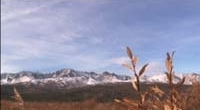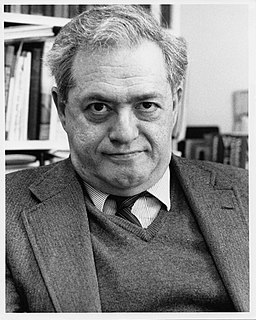Related Research Articles

Tanacross is an endangered Athabaskan language spoken by fewer than 60 people in eastern Interior Alaska.

Athabaskan is a large family of indigenous languages of North America, located in western North America in three areal language groups: Northern, Pacific Coast and Southern. Kari and Potter (2010:10) place the total territory of the 53 Athabaskan languages at 4,022,000 square kilometres (1,553,000 sq mi).

The University of Alaska Fairbanks is a public land-grant research university in College, Alaska; a suburb of Fairbanks. It is the flagship campus of the University of Alaska system. UAF was established in 1917 and opened for classes in 1922. Originally named the Alaska Agricultural College and School of Mines, it became the University of Alaska in 1935. Fairbanks-based programs became the University of Alaska Fairbanks in 1975.

Michael E. Krauss was an American linguist, professor emeritus, founder and long-time head of the Alaska Native Language Center. He died on August 11, 2019, four days before his 85th birthday. The Alaska Native Language Archive is named after him.

Ronald Senungetuk was an Iñupiaq artist originally from Wales, Alaska, who worked primarily in wood and metal.
Deg Xinag is a Northern Athabaskan language spoken by the Deg Hitʼan peoples of the GASH region. The GASH region consists of the villages of Grayling, Anvik, Shageluk, and Holy Cross along the lower Yukon River in Interior Alaska. The language is severely endangered; out of an ethnic population of approximately 250 people, only 14 people still speak the language.

The Elmer E. Rasmuson Library is the largest research library in the U.S. state of Alaska, housing just over one million volumes. Located on the University of Alaska Fairbanks campus, it is named in honor of Elmer E. Rasmuson, who served on the University of Alaska Board of Regents from 1950 to 1969 and was the board chair from 1956 to 1968. He was a major supporter of expanding the library and moving it to its present location.
The Alaska Native Language Center, established in 1972 in Fairbanks, Alaska, is a research center focusing on the research and documentation of the Native languages of Alaska. It publishes grammars, dictionaries, folklore collections and research materials, as well as hosting an extensive archive of written materials relating to Eskimo, North Athabaskan and related languages. The Center provides training, materials and consultation for educators, researchers and others working with Alaska Native languages. The closely affiliated Alaska Native Language Program offers degrees in Central Yup'ik and Inupiaq at the University of Alaska Fairbanks, and works toward the documentation and preservation of these languages.
Lower Tanana is an endangered language spoken in Interior Alaska in the lower Tanana River villages of Minto and Nenana. Of about 380 Tanana people in the two villages, about 30 still speak the language. As of 2010, “Speakers who grew up with Lower Tanana as their first language can be found only in the 250-person village of Minto.” It is one of the large family of Athabaskan languages, also known as Dené.
Koyukon is the geographically most widespread Athabascan language spoken in Alaska. The Athabaskan language is spoken along the Koyukuk and the middle Yukon River in western interior Alaska. In 2007, the language had approximately 300 speakers, who were generally older adults bilingual in English. The total Koyukon ethnic population was 2,300.
Holikachuk was an Athabaskan language formerly spoken at the village of Holikachuk (Hiyeghelinhdi) on the Innoko River in central Alaska. In 1962, residents of Holikachuk relocated to Grayling on the lower Yukon River. Holikachuk is intermediate between the Deg Xinag and Koyukon languages, linguistically closer to Koyukon but socially much closer to Deg Xinag. Though it was recognized by scholars as a distinct language as early as the 1840s, it was only definitively identified in the 1970s. Of about 180 Holikachuk people, only about 5 spoke the language in 2007. In March 2012, the last living fluent speaker of Holikachuk died in Alaska.
James Kari is a linguist and Professor Emeritus with the Alaska Native Language Center at the University of Alaska Fairbanks (UAF) specializing in the Dene of Alaska. In the past forty-five years he has done extensive linguistic work in many Dene languages including Ahtna, Dena'ina, Koyukon, Deg Hit'an, Holikachuk, Lower Tanana, Middle Tanana, Tanacross, Upper Tanana, and Babine-Witsuwit'en. He was on the faculty of UAF from 1973 until his retirement in 1997. He continues to work on numerous Alaska Native language projects. He is the author or editor of over 200 publications, including more than 4000 pages of bilingual texts in seven Dene languages. He is the most prolific contributor to the Alaska Native Language Archive. His special interest is Dene ethnogeography, and he has compiled or documented more than 14,000 place names in fourteen Alaska or Canadian Dene languages. He worked with Dena'ina writer and ethnographer Peter Kalifornsky on a 1991 compilation of his creative writings. In 2008 he was the organizer of the Dene–Yeniseian Symposium in Alaska, and co-editor of the volume The Dene–Yeniseian Connection published in 2010. In 2009 was selected Kari for the Alaska Governor's Award for the Humanities. In March 2013 Kari received the Professional Achievement Award at the 40th annual meeting of the Alaska Anthropological Association. In 2019 he was presented with a volume of papers by colleagues that recognize his career in Dene research.

Clarence Lee Alexander is a former Grand Chief of the Gwich'in of Alaska. He was 1st Chief of Fort Yukon from 1980 to 1994. He was raised at "Shoo Taii," the "Happy Hill," which is also known by the name "Alexander Village". Alexander Village is approximately 20 miles north of Fort Yukon. He co-authored the Gwich'in Dictionary with his wife, Virginia E. Alexander.He has five children and had 8 brothers and sisters. The majority of his family have moved to Fairbanks, Alaska except for one son, his children, and his wife.
Alaska Natives are a group of indigenous people that live in the state of Alaska and trace their heritage back to the last two great migrations that occurred a thousand years ago. The Native community can be separated into six large tribes and a number of smaller tribes, including the Iñupiat, Yup'ik, Aleut, Tlingit, Haida, Tsimshian, and others. Even with just a small amount of communities that make up the entire population, there were more than 300 different languages that the Natives used to communicate with one another.
The Native Art Center at the University of Alaska Fairbanks is an art school located at the University of Alaska Fairbanks (UAF), near Fairbanks, Alaska. The Native Art Center was started in 1966 by Ronald Senungetuk (Iñupiaq). Today, the Native Art Center is directed by Da-ka-xeen Mehner (Tlingit-Nisga'a) and offers BFA and MFA degrees in Native Art.
Proto-Athabaskan is the reconstructed ancestor of the Athabaskan languages.

Troth Yeddha' is the name of the prominent ridge on which the University of Alaska Fairbanks is currently located. In February 2013, the US Board of Geographic Names approved the University supported proposal to officially rename the ridge.
Joan M. Tenenbaum is an American linguist, anthropologist and artist specializing in metalsmithing and jewelry. She is equally well known for her documentation of the Dena’ina language as for her jewelry pieces which tell the stories of Alaska native peoples and landscape.

Siri Tuttle is the former director of the Alaska Native Language Center, the Alaska Native Language Archive, and a former Associate Professor of Linguistics at the University of Alaska, Fairbanks. She specializes in Dene (Athabascan) languages of interior Alaska and has contributed to the fields of acoustic phonetics, phonology, and morphology. She retired in 2021.
Irene Reed, was an American anthropologist, linguist and educator, central in preserving and promoting the Yup'ik language in Alaska.
References
- ↑ Krauss, Michael E. 1974. Alaska Native language legislation. International Journal of American Linguistics 40(2).150-52.
- ↑ Holton, Gary. 2010. Behind the Map: The reification of indigenous language boundaries in Alaska. Working Papers in Athabaskan Languages, ed. by S. Tuttle & J. Spence, 75-87. (Alaska Native Language Center Working Papers 8). Fairbanks: Alaska Native Language Fairbanks.
- ↑ University of Alaska Fairbanks press release, February 15, 2013. https://news.uaf.edu/native-language-archive-opens-in-rasmuson-library/
- ↑ University of Alaska Fairbanks press release, July 21, 2016. https://news.uaf.edu/tuttle-named-alaska-native-language-archive-director/